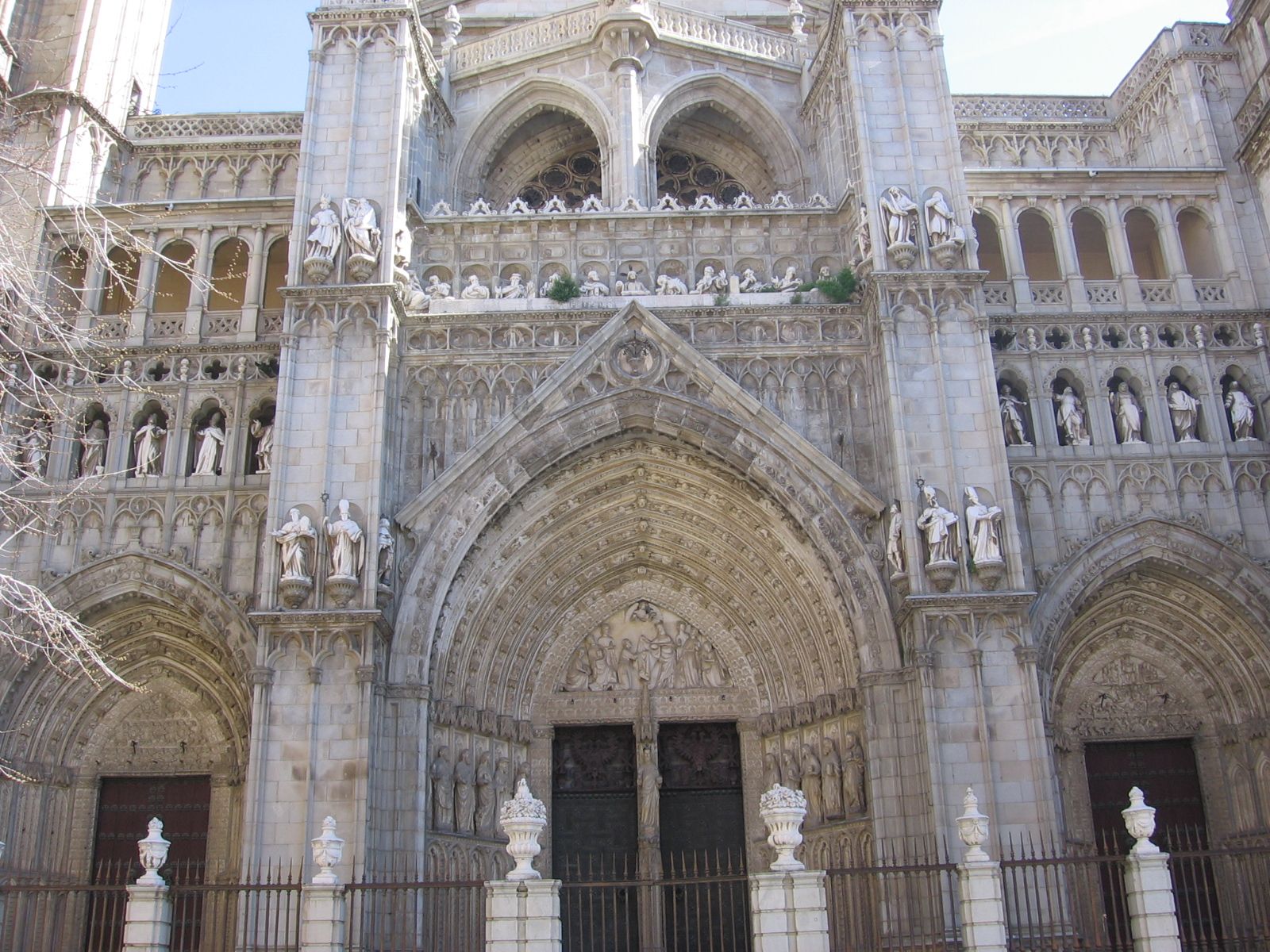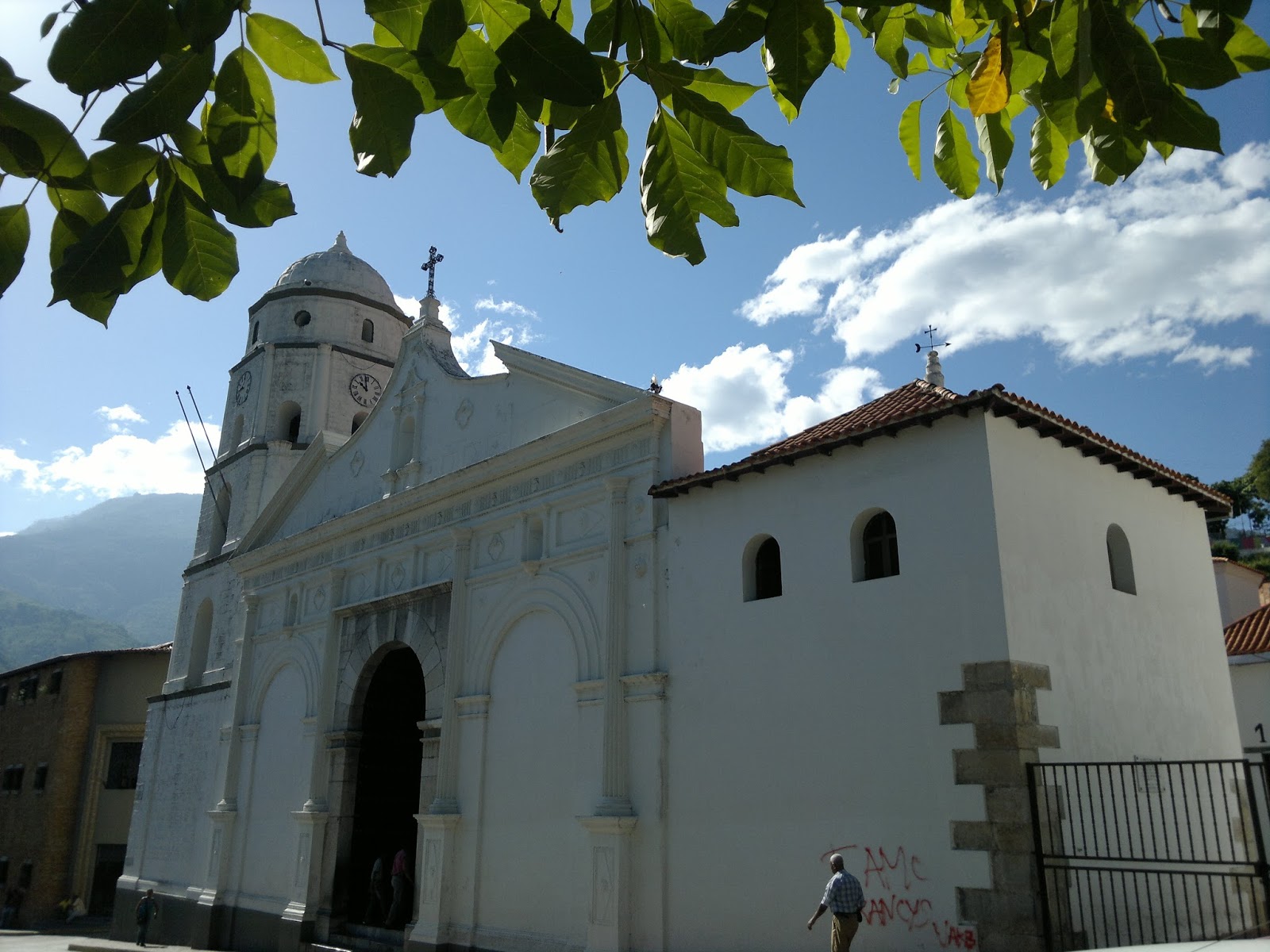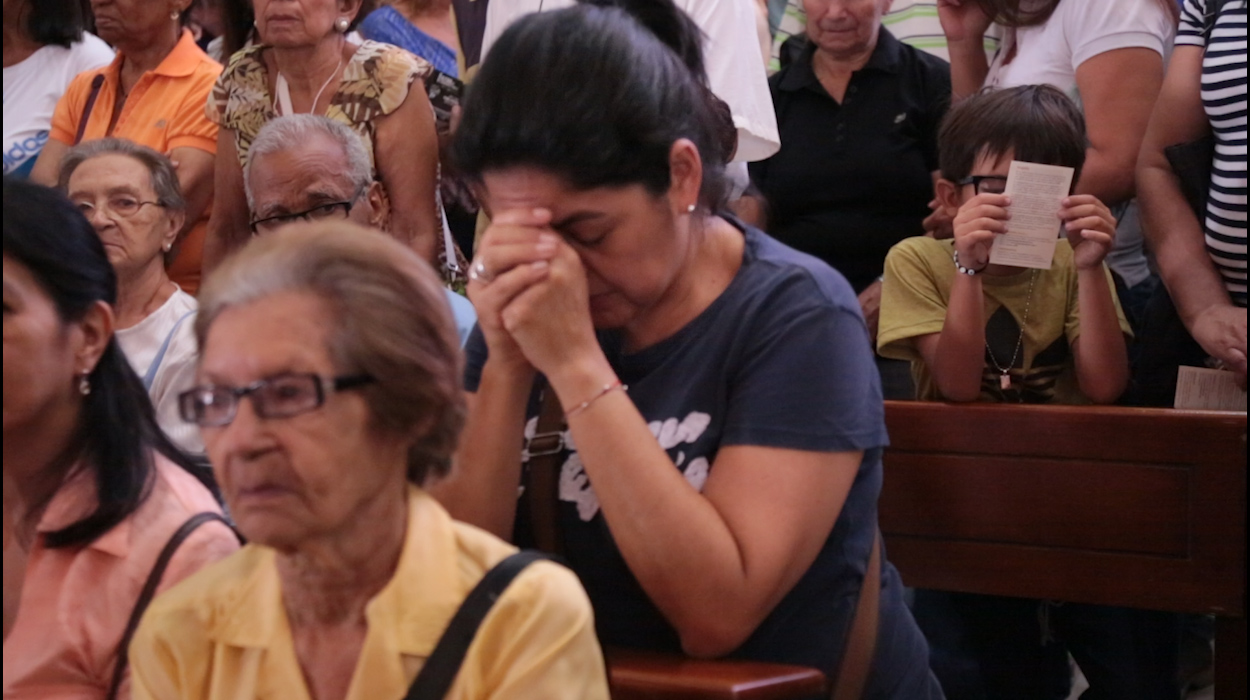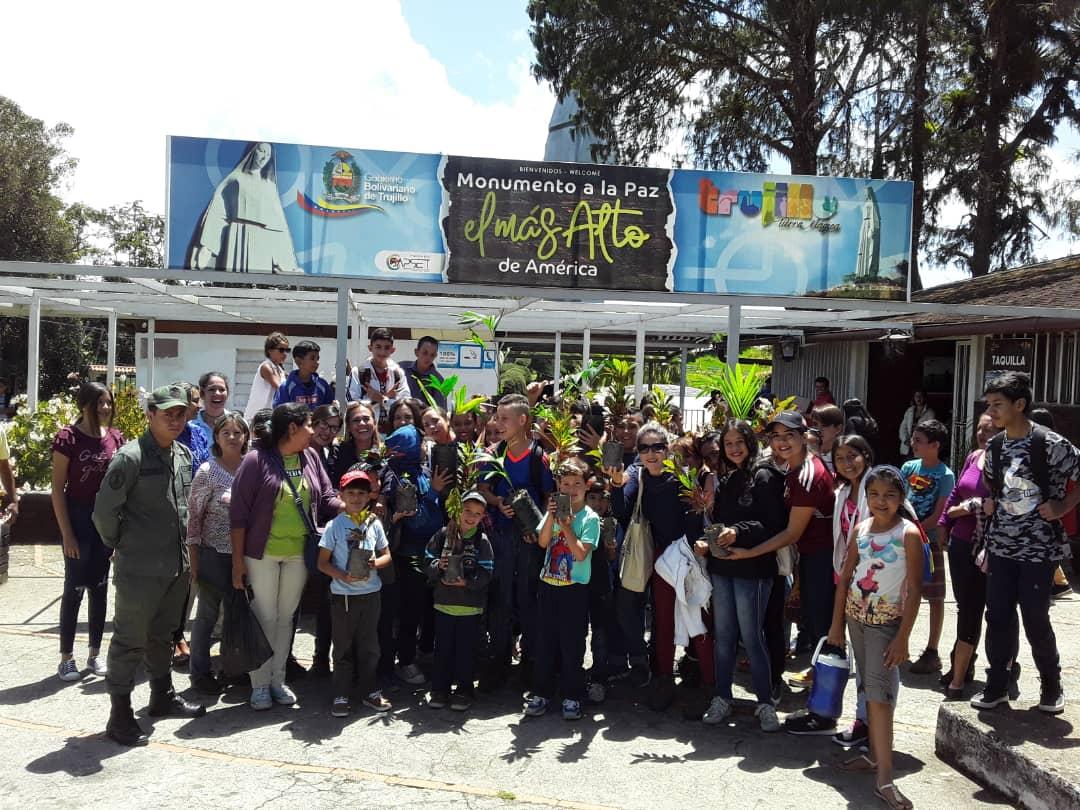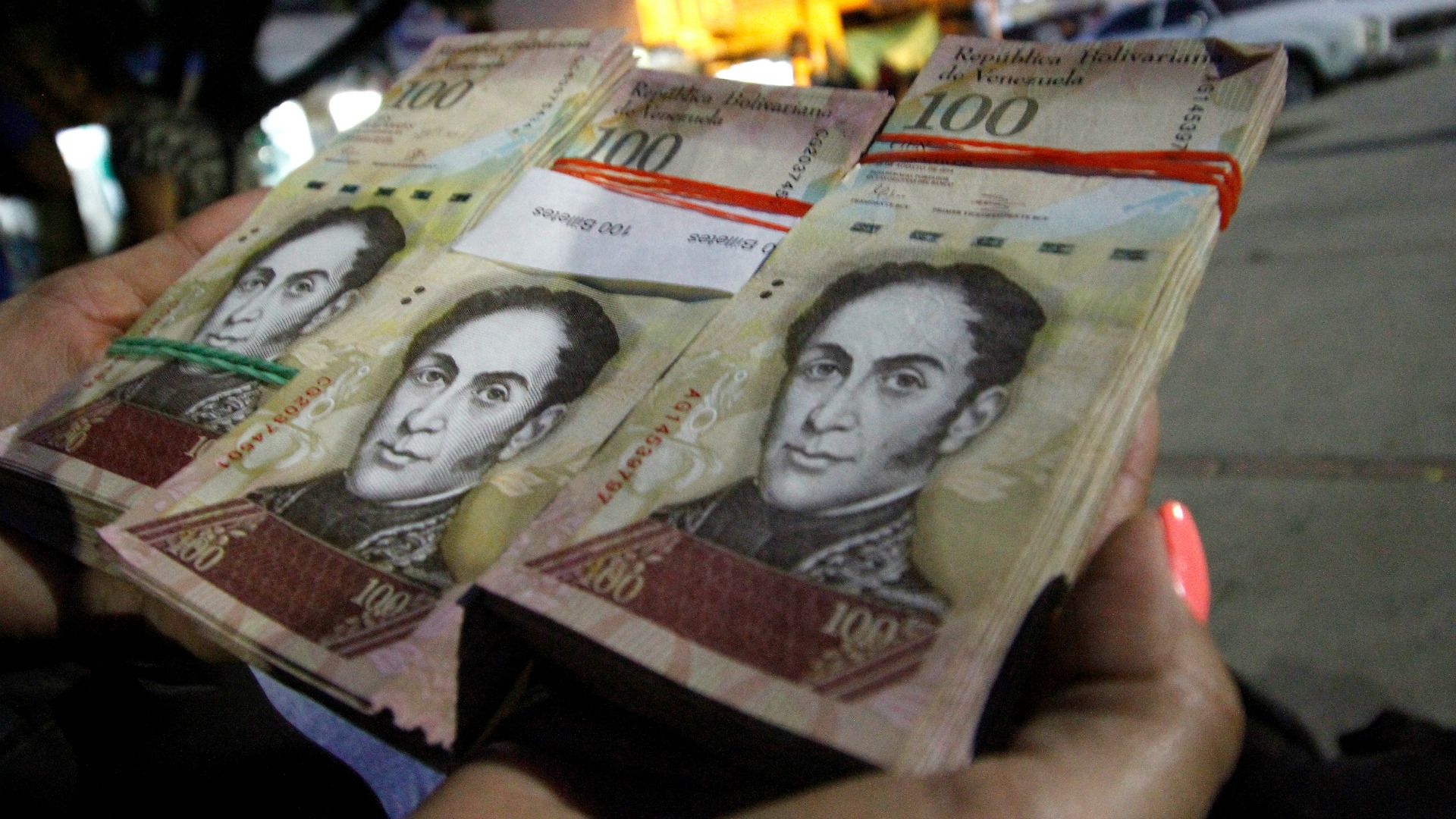In the sphere of the Catholic religion, one of its emblematic figures is the Virgin Mary, a divinity to whom tribute is paid in many places on the planet. The article that we present below is about the Virgen de la Paz, spiritual patron saint of the Trujillo State in Venezuela.

General considerations
If there is a world event that deserves to pay tribute, obviously it should be none other than the coveted, but also well-thumbed world peace. This is easily deductible, if you look at the number of conflicts that afflict the planet, and judging by the facts there is no solution in the medium or long term, much less expect a quick or immediate solution. If you are interested in this topic, we recommend you read the following article: Peace symbol
The monument to the Virgen de la Paz erected in Venezuela is a beautiful contribution, a significant gesture that the people of this South American nation made as a contribution to draw attention not only in the regional sphere, but also in the the whole world, about the need to fight to achieve a true, stable and necessary peace.
History of the Virgin of Peace
The Bolivarian Republic of Venezuela is a very fertile land, when it comes to producing stories, anecdotes, cults, stories related to its history as a nation and as a people, which consolidated its protected status in a struggle for its emancipation. In this regard, characters, events or simply facts arise around its history, which the collective popular consciousness has been in charge of designing, in a very creative way, an imaginary.
This act of collective creation is expressed through: stories, chronicles, folkloric comments, most of them loaded with magical thinking, but others, based on proven historical facts. Each state or region, which makes up the political-administrative structure of Venezuela, has a record, a very extensive cultural anecdotal heritage.
Referring to the state of Trujillo specifically, it is located in the western part of the country, characterized by its agricultural coffee production, it is said, it is said that it is a land "of wise men and saints"; This reference is made, since in that state great figures of the religious field and the scientific field have been born, who exalt the cultural demonym of the Trujillo people; such is the case of Dr. José Gregorio Hernández.
This great Venezuelan doctor and scientist is considered the protagonist of the popular devotional religious cult, the most important in the country since, in addition to demonstrating magnificent contributions to Venezuelan medical science, his skills as a holy healer are widely recognized throughout the national and international sphere. .
The grace of God, expressed through the gift of healing, is attributed to Dr. José Gregorio Hernández. There are countless testimonies of the miraculous actions of this doctor who has also been called "Doctor of the poor". This is how it is popularly known.
Currently the Catholic Church has recognized his sanctity, granting him the title of venerable and it is said that his total beatification is a matter of bureaucratic procedures. Another emblematic character of the state of Trujillo, who fills his name with pride, is the scientist Rafael Rangel, a native of the state capital, this character is recognized for his great contributions in the study of tropical diseases, in addition to being considered the father of Parasitology and Bioanalysis in Venezuela.
The Venezuelan institute, of the highest study in the field of research into bacterial and virological diseases, bears the name of Rafael Rangel, as a tribute to the illustrious man of science. But in turn, the Trujillo state is the land where the Virgin of Peace is worshiped.
In this regard, it is argued that the worship of this religious expression, which represents the mother of God, was born in Spain, approximately in the seventh century AD. C., where the archbishop of Toledo, named Ildefonso, was a furious devotee of the Virgin Mary, the mother of God, they say that one day during the month of December, he entered the church of Santa María in the city to which we refer and noticed that there was an unusual clarity .
Faced with such an impression, Archbishop Ildefonso, testifies that the light emanated from the figure of the Virgin Mary, sitting in her place in the chapel. The religious considered the fact as a miracle and a reinforcement of her veneration for the Holy Mother of God, and he systematically dedicated himself to spreading the experience as a grace of this.
Another event that marks the veneration of the Holy Virgin of Peace dates back to the Spanish historical period, where the country was dominated by Muslims, who wanted to convert the church of Santa María de Toledo into an Islamic temple. Proceeding then to form a large and powerful army, and undertake the siege of the city; This military action lasted approximately one year.
But for no reason, or at least known, they withdrew, desisting from their objectives, despite having taken the temple, they handed it back to the Christian sector. All this happened on the same date that the father Ildefonso recognizes the apparition of the Virgin, on January 24. This situation has been taken as the realization of a miraculous act by the Virgin of Peace.
In Venezuela, the place where the monument to the Virgen de la Paz is erected, her veneration came with the process of conquest and colonization, which the territory that today bears the name of America experienced. In that area of Trujillo state where the monument is located, it was a territory that belonged to the Escuque ethnic group. This native people of America, who were descendants of the Chibchas, an indigenous group that inhabited the center of the continent, where Colombia is today, settled in western Venezuela.
In the area in question, there was an indigenous uprising against the Spanish invaders, the protagonists of the insurgency were descendants of the Cuicas or Timoto-cuicas, these peoples are granted familiarity, with the Colombian Chibchas, well, the revolt was defeated by the conquerors, colonizers, and imposed all the cultural heritage that they brought from Europe, specifically from Spain, including the cult of the Virgin of Peace.
We can express then that it is from 1500, when the beginning of the veneration of the Virgin of Peace is marked, since, in 1600, a century later, the church of Señor Santiago de Nuestra Señora de la Paz was built, a temple where The Virgin of Peace is worshiped from that time until today.
The cultural religious contribution that was forged from that moment in the XNUMXth century, around the representation of the regional Virgin Mary, is important to highlight since she became the spiritual patron of Trujillo. Being this fact highlighted in many ways in the iconographic history of the state.
For example, in the design of the state flag, a celestial body can be observed, in its center we find the drawing of a dove, as a sign of the impact of the Virgin of Peace in the classic symbols of the state; In addition, the star is immersed in a green triangle, each side of the figure represents a significant historical event, in the future of the region, such as:
The interview between the liberator Simón Bolívar and the Spanish general Pablo Morillo, in the town of Santa Ana, which marked an armistice in the war of independence in 1820; the construction of the church where the Virgen de la Paz is venerated in the 1983th century, where the influence of the Virgen de la Paz reappears; and the concretion of the monument to the Virgen de la Paz in XNUMX, a fact that constitutes a historical milestone in the cultural-religious development of the state of Trujillo, given its national and international importance.
There is therefore no doubt about the significant effect that the fervor towards La Virgen de la Paz has had for the people of Trujillo.
Legend
The collected stories tell us that the place where the Virgen de la Paz monument is located is called Peña de la Virgen; They say that the years of 1550 passed, the Virgin made her appearance before a group of inhabitants of the town of Carmona, who say that she, with a youthful and very active image, entered the town and visited a store with the idea After buying some candles for her personal use, the locals, surprised by her presence, asked her why she was so alone.
The popular anecdote, here, recognizes two versions: the first alleges that the girl responded quickly, emphatically, but very spontaneously, in the following way "not alone, but with God, with the sun, and the stars"; the second states that, when asked the same question, the answer was the following: “children, do not forget that I am always with God, my protector”. People were so shocked by the young woman and her response that they decided to follow her and see where she was going.
The story about the apparition of the Virgin, narrates that the woman continued towards the field, and got lost among some stones, they could only observe many flashes of light, which came out of them.
When investigating more deeply, about the origin of the mysterious young woman, nobody knew her, nor could they give any reference to her; coming to the conclusion that she was not an earthly being, and that she was the very Virgin Mary, mother of our Lord made flesh.
They say that the place where she took refuge is a place where three important rivers converge and the Virgin with her divine presence prevents the torrents of water from increasing, it may rain in large quantities, but they never overflow; the villagers who believe in the Virgin assure that this is true and that the Virgin miraculously protects the people against all natural calamities of this type. We invite you to read about the meditations for the holy hour.
Monument to the Virgin of Peace
According to some historiographers, the monument to the Virgen de la Paz was an idea that was born from the citizen Betty Urdaneta de Herrera Campins, wife of the president of the republic at the time, Luis Herrera Campins; She, a native of the state of Trujillo, together with the state governor, Mrs. Dora Maldonado, promoted the proposal to make a monument to the Virgen de la Paz, based on the premise that this deity is the patron saint of Trujillo.
The speed with which they carried out the work, supposedly in the construction of the monument to the Virgen de la Paz, lasted 18 months, is surprising. The artistic piece has the following characteristics: the sculpture is a piece of steel and a layer of concrete is placed on it, it weighs approximately 1200 tons.
Only the head of the structure weighs about 8 tons, has a length that touches, 47 meters high, 16 meters wide and 18 meters deep in the support zone; It is a hollow work, with internal stairs that allow the visitor to go through it inside and park in each of the five viewpoints that it has.
Its location is privileged since it was designed to be built exactly where the Virgin supposedly made her appearance; In addition, it is erected at 1600 meters above sea level, embedded in a mountain of exuberant tropical vegetation, from its viewpoints you can see practically the entire state of Trujillo, the Sierra Nevada de Mérida park and some areas to the south of the lake in the Zulia state.
From the artistic point of view, the monument to the Virgen de la Paz has several aspects to consider; The first thing is its great size, it is the monument to the Virgin, considered the largest statue in Latin America, and even taller than the Monument to Liberty in the United States of North America and the Christ of Corcovado in Brazil, making except that as a monument whose purpose is to pay tribute to peace, it is the tallest in the world.
The exterior image of the monument to Peace, lacks details, is simple, clean, the Virgin is only covered by a blue habit, the only element that stands out is the dove that she carries in one of her hands, according to uncertified information , not corroborated, it is said that it was a commission made by its promoter, President Luis Herrera, to the designer of the work.
This president demanded that the meaning of the sculptural piece be accentuated, which was none other than to pay a necessary tribute to Peace, not only in the region but in the entire planet. It is said that this allegorical detail represented a heartfelt motivation of the presidential couple.
The monument to the Virgen de la Paz was opened to the world on December 21, 1983, by the president of the republic himself, with relevant figures from the Venezuelan Catholic Church present at the event along with some from the Holy See.
Although the Holy Pope Juan Pablo II, could not attend the opening appointment to the monument of the Virgen de la Paz, accompanied the event through a television message that was broadcast during the opening ceremony.
The opening speech was given by the illustrious Trujillo intellectual Mario Briceño Perozo. The administration of the monument to the Virgen de la Paz, had in its beginnings, in the hands of a private company, which was in charge of coordinating all aspects around the monument such as: maintenance, discriminating resources generated by the work, hiring and staff supervision, and undertake religious tourism plans.
Subsequently, his administration passes so that the state takes over, in this case the government of the Trujillo state. Currently the monument to the Virgen de la Paz, constitutes a pole of tourist attraction, not only in the region, it is also a center of national and international tourist interest. It is estimated that it is the third point of tourist attraction in the state of Trujillo.
Below Isnotú, town where the holy doctor José Gregorio Hernández was born and the Tostós procession on the crucifixion of Our Lord. Only in the biggest week the monument to the Virgen de la Paz, receives between 11.000 and 15.000 visitors.
Definitively, the veneration of the Virgen de la Paz, and its extraordinary monument, came to change the dynamics of a region of Venezuela characterized by its tranquility, and its spirit of agricultural work; but this time, protected by the monument to the Virgen de la Paz, it is its status as a tourist-religious land, which sets the standard in the region.
It is pertinent at this stage of the work on the monument of the Virgen de la Paz, to clarify that the realization of this monumental work was done within a context of national crisis, marked by the sudden drop in oil prices, reaching the Pyrrhic sum of five dollars per barrel of crude oil.
This implied a very large economic imbalance at the national level, causing the breaking of the balance that had been maintained for years in the Venezuelan economy, between the national currency, the Bolívar, and the North American currency, the dollar.
In order to cover its operating needs, the government abruptly devalued the Venezuelan currency, going from a ratio of 2,50 Bs. per one dollar, to 14 Bs. per one dollar, this system being subject to the free exchange policy, that is, that the rules of the economic game changed daily in the country. This generated a general stampede of capital and the declaration of bankruptcy of a large number of companies, which could not pay for imported raw materials.
This economic fact is known in the contemporary history of Venezuela, as Black Friday, since it was on Friday, February 18, 1983, when the measure was announced. In the midst of this economic chaos, the government decided to carry out a religious work, the monument to the Virgin of Peace, even costing 9 million Bolivars, many considered that it was a political and economic blunder of the government in power.
For believing Christians and their religious institutions, the expense was justified, the truth is that Venezuelans always remember Black Friday 1983 with bitterness, and the monument to the Virgin of Peace as a majestic symbol of peace and hope for the peoples of the world.
The cult of the Virgin
The monument to the Virgen de la Paz, represents an interesting example for establishing relationships between areas or cultural manifestations, which at first sight would be contradictory and incompatible. After 36 years of existence of the monument to the Virgen de la Paz, the results are absolutely flattering, when religion and religious worship are mixed with a humanistic vision of nature; or religion and religious worship with a modern and productive tourism vision.
As the Virgin of Peace has been said, she is the patron saint of the people of Trujillo. The people commemorate her protection by organizing festivities that begin on January 24 and end on the 30 of the same month. of activities; not only religious liturgies, such as masses and processions; cultural, gastronomic, recreational activities also arise; that attract a large number of people, not only believers and devotees of the Virgin.
Tourists interested not only in the religious nuance of the festivities also attend the patron saint festivities of the Virgen de la Paz, they are also attracted by the color and the variety of attractive cultural offerings that are presented in the commemoration festivities of Our Lady. of Peace in Trujillo.
In the case of the monument to the Virgen de la Paz, it is packed with people. Some who go to waste religious fervor and dedicate themselves to prayer in the beautiful churches that have the monument of the Virgen de la Paz around them; Others simply enjoy the landscape and the view offered by the different viewpoints that the monument to the Virgen de la Paz has. When the cult of the patron Virgin of Trujillo is celebrated, its impact reaches all corners of the state.
After the festivities in honor of the Virgen de la Paz end, the revelry that takes place in the Holy Week should be highlighted, around the monument to the Virgen de la Paz, parishioners from all over the country go to the site seeking spiritual happiness, Others assume the task of asking for a favor that allows them to save some critical situation, personally or family. The amount of liturgical activities that are organized around the monument to the Virgen de la Paz is impressive.
It should be highlighted among so many activities, the Peace March that takes place annually, during Holy Week, begins in the capital city Trujillo, leaves very early in the morning and ends with a Eucharist, at the headquarters of the monument to the Virgin peace.
If you liked our article, we invite you to review more interesting topics within the blog, such as: Virgin of Lourdes


